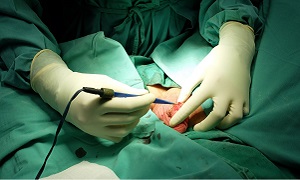Penile Cancer
Penile Cancer is a relatively rare form of cancer, which is known to affect the skin and tissue of the penis. This condition occurs when healthy cells in the penis turn cancerous and grow out of control, forming a tumor. The cancer might spread to other areas of the body as well, including the glands, other organs, and lymph nodes.
Symptoms
It is better if penile cancer is detected earlier, as if found early, there is a good chance that there is going to be a successful treatment and cure. However, if the diagnosis is delayed, then the disease may get worse. Treatment for more advanced cancer might also be less successful and at the same time, more disfiguring.
People generally spot the disease early as they see and touch the penis while urinating. Men who are not circumcised are generally at a greater risk of penile cancer, though every man should be on the lookout for penile lesions.
If you notice any of these symptoms on your foreskin, or your shaft, or the head of the penis, then you should inform your healthcare provider. The symptoms include:
- An area of your skin becoming thicker or/and changing color
- A reddish, velvety rash
- An ulcer (sore) that may bleed
- A lump on the penis
- Small, crusty bumps
- A smelly discharge under your foreskin
- Flat, bluish-brown growths
- Swelling
Sometimes these signs might just be a bacterial or fungal infection or even an allergic reaction. All of these respond to antifungal or antibacterial ointments or creams. However, if any of these growths return or there are sores that don’t heal, then you must treat them as cancer until it is proven that they are not.
Penile cancer is generally ignored until it is advanced since most patients might feel reluctant or embarrassed to talk about their genitals. Sometimes patients might also feel afraid of treatment or surgery on their private parts. However, if you notice these signs please make sure, you let your health care provider know about it as soon as you can.
Causes & risk factors
Though the exact cause is not known, body fluids that get trapped in the foreskin are believed to cause penile tumors, and if they aren’t washed away routinely, they can lead to cancer-causing effects. Older men who are smokers are generally more likely to get penile cancer. Conditions such as AIDS can also lead to penile cancer.
Men who maintain proper hygiene, as well as men who are circumcised, are generally less likely to get penile cancer.
Some of the risk factors include:
- Being over the age of 60
- Practicing poor personal hygiene
- Living in a region with poor and improper sanitation and hygiene practices
- Smoking cigarettes
- Having a sexually transmitted infection, such as human papillomavirus (HPV).
Diagnosis
Physical exam
To perform a diagnosis, your doctor will need to perform a physical exam and use certain diagnostic tests as well. During the physical exam, your doctor will need to look at your penis, and inspect any lumps, masses, or sores present.
Biopsy
Cystoscopy
If the biopsy results show any sign of cancer, then your doctor might want to perform a cystoscopy to check if cancer has spread. This procedure involves using an instrument called a cystoscope, which is equipped with a small camera and light at the end.
During the procedure, the doctor is going to insert the cystoscope into the penis opening and through the bladder. This is going to allow your doctor to view different areas of your penis as well as the surrounding structures, making it possible to determine whether cancer has spread or not.
MRI
Sometimes an MRI of the penis might also be conducted to ensure that cancer hasn’t invaded any deeper tissues of the penis.
Treatment
If the cancer is detected early, it can be treated with success and low risk. If the tumor is at the top of the skin, it might be treatable with just skin cream. However, the cream has a few side effects. For small lesions, external beam radiation is also used.
Some of the other main forms of treatment include-
Circumcision
Chemotherapy
Laser therapy
Radiation therapy
Cryosurgery
Surgery
The above methods are used if the penile cancer is non-invasive. Surgery might be required if the cancer is invasive. It might involve removal of the tumor, entire penis, or lymph nodes in the pelvis and groin.
The surgery can be of various types-
Excisional surgery
Moh’s surgery
Partial Penectomy
Regardless of which type of surgery was performed, make sure to follow up with your doctor every two to four months during the first year after the surgery. If the entire penis is removed, you can talk to your doctor if penis reconstructive surgery is an option.
Your post-treatment experience generally depends on the stage of cancer when it was found. When the lesions are found early, then curing the cancer is almost certain. As the tumor becomes more advanced, then the cure becomes less certain.
If the cancer is found later, then the treatment might cause surgical side effects that might be difficult to deal with.




